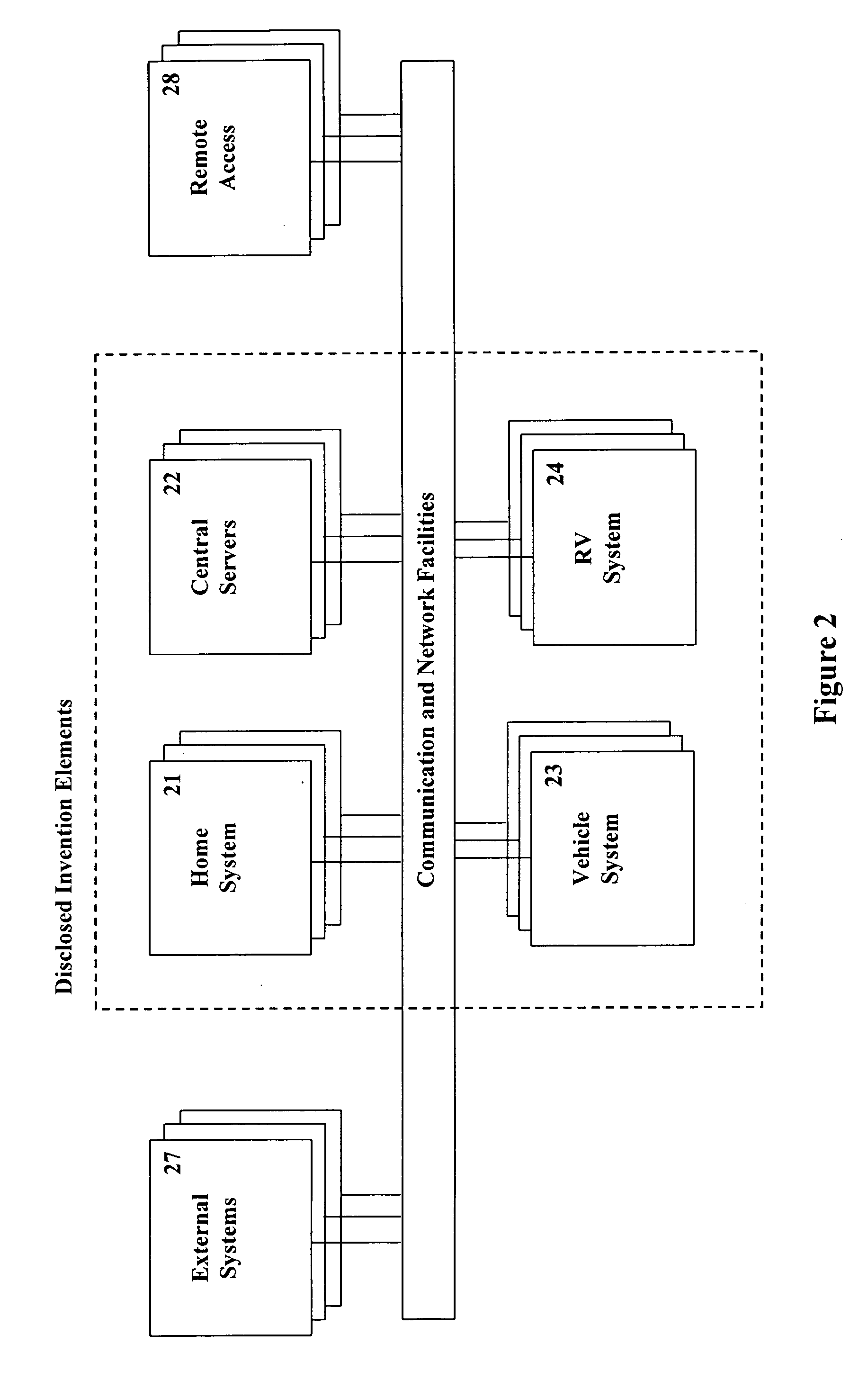Methods and systems for automating the control of objects within a defined human environment
a technology of living environment and automation method, applied in the field of methods and systems for automation of human living environment, can solve the problems of low usability, low usability, and low usability, and achieve the effect of the cost of installation, reducing the overall cost of the system, and being easy to use and understand
- Summary
- Abstract
- Description
- Claims
- Application Information
AI Technical Summary
Benefits of technology
Problems solved by technology
Method used
Image
Examples
Embodiment Construction
[0056] This section contains a detailed description of the disclosed invention including its operation and functional breakdown. The unique features of the disclosed invention are noted and described with reference to the appropriate figures. In the description the terms user and homeowner are used. The general intent is that homeowner is used to specify a person with authority over the home and therefore having full access to all features of the disclosed invention. A user is any person that interacts with the system, regardless of the level of interaction (e.g., whether passively viewing a display screen or actively using input controls to affect devices or systems controlled by the disclosed invention). These terms are not used rigorously; they are intended to show at what points and in what manner a human interacts with the disclosed invention.
[0057] The disclosed invention the capability to communicate in various ways using various media, as appropriate to the system or device...
PUM
 Login to View More
Login to View More Abstract
Description
Claims
Application Information
 Login to View More
Login to View More - R&D
- Intellectual Property
- Life Sciences
- Materials
- Tech Scout
- Unparalleled Data Quality
- Higher Quality Content
- 60% Fewer Hallucinations
Browse by: Latest US Patents, China's latest patents, Technical Efficacy Thesaurus, Application Domain, Technology Topic, Popular Technical Reports.
© 2025 PatSnap. All rights reserved.Legal|Privacy policy|Modern Slavery Act Transparency Statement|Sitemap|About US| Contact US: help@patsnap.com



